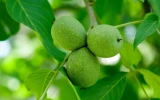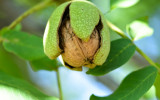5 Types of Walnut Trees in Ontario (With Pictures)
Walnut trees in Ontario, particularly the black walnut variety, cover over 10,000 hectares of the province's forests. While wandering through Southwestern Ontario, especially, you might encounter these majestic trees, which have adapted well to the local climate and soil conditions.
In Ontario, the primary types of walnut trees include the native Black Walnut (Juglans nigra), the threatened Butternut (Juglans cinerea), the introduced English Walnut (Juglans regia), and the less common Heartnut (Juglans ailantifolia var. cordiformis), as well as hybrids like the Buartnut (Juglans x bixbyi).
The English Walnut, while not native, is cultivated for its lighter wood and milder tasting nuts. The Black Walnut is native and particularly valued for its wood and nuts, while the Butternut, also producing edible nuts, is rarer and considered endangered due to disease. Find out below what this disease does to the tree.
Summary
- The Black Walnut reaches heights of up to 70 feet, displaying a rounded crown. The fruit contains a hard, thick seed, enveloped by a green, fleshy husk.
- Also known as white walnut, Butternut is easier to work with due to its softer wood. It's valued for the oil extracted from its nuts.
- English Walnut, common in Ontario, is known for edible nuts used in grocery stores, and its wood is used for veneer and paneling.
- Heartnuts are a unique species with heart-shaped seeds that are both edible and high in nutritional value.
- Buartnut is a hybrid between Butternut and Heartnut. It's not native but planted in Ontario for its edible nuts and disease resistance to butternut canker.

On this page:
| Species | Size (Height and Diameter) | Nut Characteristics | Habitat Preferences |
|---|---|---|---|
| Black Walnut (Juglans nigra) | 30-40m (98-131ft), 60-80cm (24-31in) | Round nuts with a thick, hard shell; nuts are edible with a rich flavor | Rich, well-drained soils in mixed hardwood forests; full sun |
| Butternut (White Walnut, Juglans cinerea) | 20-30m (65-98ft), 40-80cm (16-31in) | Oval nuts with a thick shell; nuts are edible with a buttery flavor | Well-drained soils, often found along streams and in open woods; full sun to partial shade |
| English Walnut (Juglans regia) | 20-35m (65-115ft), 40-80cm (16-31in) | Large, round nuts with a thin shell; nuts are edible and commonly consumed | Deep, fertile, well-drained soils; prefers full sun |
| Heartnut (Juglans ailantifolia var. cordiformis) | 15-25m (49-82ft), 30-60cm (12-24in) | Heart-shaped nuts with a thin shell; nuts are edible with a mild, sweet flavor | Moist, well-drained soils; full sun to partial shade |
| Buartnut (Hybrid of Butternut and Heartnut) | Similar to parent species, generally 20–25 m (65–82 ft) height | Variable, often resembling butternut in shape; edible nuts with a rich flavor similar to butternut | Similar to parent species, adaptable to a range of soil conditions; full sun to partial shade |
Black Walnut (Juglans Nigra)
The black walnut is a species native to Ontario, well-regarded for its quality hardwood. You can identify this walnut by its straight stature and dark, furrowed bark which often forms irregular diamond patterns, providing a distinct appearance as well as protection against pests.
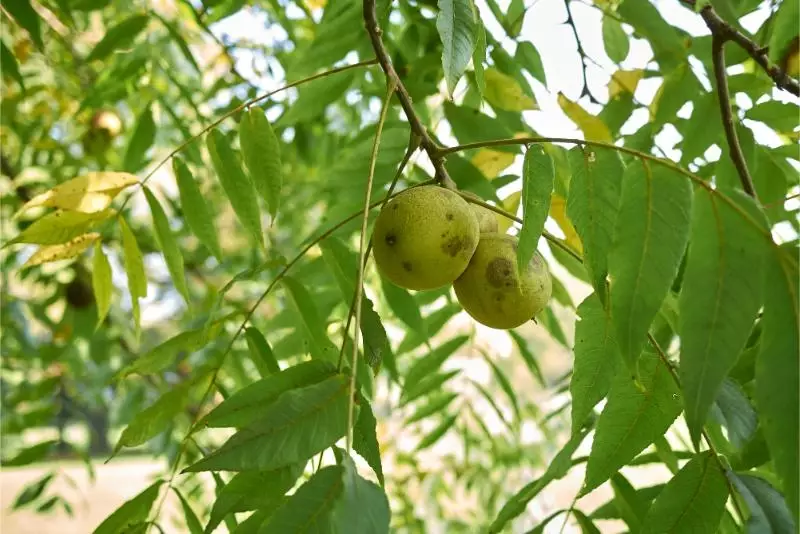
Leaves: Black walnut trees boast pinnately compound leaves. Each leaf consists of 15 to 23 leaflets with finely serrated edges. In autumn, the foliage turns yellow, adding beauty to the landscape before the leaves drop.
Growth & soil: Black walnut tree thrives in well-drained soil and requires full sun exposure to reach its optimal height, which can be up to 30 meters. Its growth contributes to a broad canopy that offers generous shade.
Fruit & uses: The nuts are encased in thick, green husks that turn brown as they mature. While the nuts are edible, they're tough to crack but are a favorite amongst local wildlife, like squirrels and birds. Beyond their edible seeds, the wood is prized for furniture, veneer, and even dye. The tree's oil is another valuable byproduct, typically used in wood finishing.
When planning to plant black walnuts in your area, remember they produce a substance called juglone, which can inhibit the growth of certain other plants. So it's best to choose juglone-tolerant species such as maples, oaks, and hickories to accompany them.
If you're planning to grow black walnuts for profit, here's a detailed guide.
Butternut (Juglans Cinerea)
The butternut, also known as white walnut, bears oblong fruits that house a rich, edible nut. These trees reach up to 60 feet in height and provide a lighter colored wood compared to the black walnut. You'll notice their leaves also have fewer leaflets, typically 11-17, and the nuts are coveted for their oil content.

Butternut, part of the Juglandaceae family, is a species of walnut indigenous to Ontario. You'd recognize it by its compound leaves, typically comprised of 11 to 17 leaflets. The bark of this tree is gray, becoming more ridged and fissured with age.
The nut, encased in a lemon-shaped fruit, is a draw for wildlife. You’ll find birds and squirrels particularly attracted to the butternut's seeds. The timber is a soft hardwood, valued in making furniture and carving due to its light brown color.
Your butternut tree will need well-drained soil and plenty of sunlight. It enjoys the company of other nut trees and thrives in forests that offer some shade.
While butternut trees are afflicted by diseases like canker, efforts in conservation aim to protect them. Recognizing its value in terms of wildlife benefits and its use in oil production, you might appreciate its role in Ontario's habitats.
English Walnut (Juglans Regia)
The English Walnut—often referred to as Persian Walnut—is a common type of walnut tree cultivated in Ontario. You might recognize it by its rounded canopy filled with lush, green foliage. Its leaves are typically pinnately compound, consisting of multiple leaflets, creating a feather-like appearance.
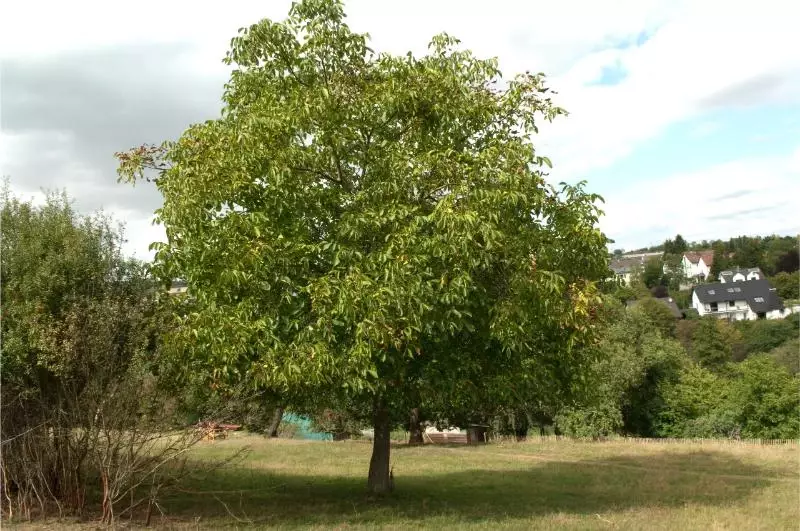
This variety of walnut is notable for its edible nuts, which are highly sought after for both their rich flavor and oil content. The nuts you enjoy from grocery stores are usually harvested from these trees.
Beyond the delicious nuts, the wood of the tree is a valuable hardwood used for veneer and paneling, appreciated for its fine grain and warm color.
Growing to a height of between 33 and 131 feet, English Walnut trees thrive in well-drained soil and require sun exposure to flourish. They produce gray bark and bright green catkins, which are the tree's flowers.
When planted in your backyard, English Walnut trees provide excellent shade and can enhance the landscape aesthetically.
It's important to plant English Walnut trees in an area where they have enough space to grow—both in height and spread of their branches. Wildlife, such as birds and squirrels, enjoy the seeds; therefore, planting these trees can also support local biodiversity.
English Walnut trees grow best when the soil is fertile and has good drainage, making them a relatively low-maintenance option for your garden or orchard.
Heartnut (Juglans Ailantifolia Var. Cordiformis)
Heartnuts are a unique species with heart-shaped seeds that are both edible and high in nutritional value. Their wood is less commonly used, but the tree's attractive form and bountiful fruit make it a favorite in gardens and orchards.

A relative of the butternut, the heartnut tree is admired for its tasty nuts. It stands with a lofty stature of up to 100 feet tall and features compound leaves similar to those of butternuts. The foliage turns a stunning yellow in the fall, enriching your garden's palette.
The heartnut is a variety of the Japanese walnut (Juglans ailantifolia) and is sometimes grown in Ontario. While it is less common than the black walnut, it is valued both for its distinctive nuts and as an ornamental tree.
To start your own walnut farm, here's a guide on the requirements and the steps to follow.
Buartnut (Juglans x bixbyi)
This is a hybrid between the Butternut (Juglans cinerea) and the Heartnut (Juglans ailantifolia var. cordiformis). It is not native to Ontario, but it is sometimes planted there due to its resistance to butternut canker and its production of edible nuts similar to its parent species.
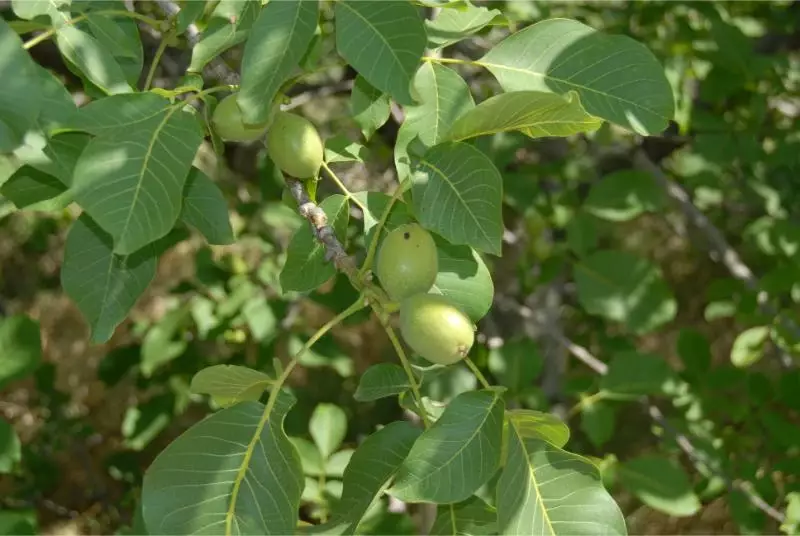
In Ontario, the Buartnut is not as commonly found as the native Black Walnut or Butternut trees. However, it has gained interest among tree growers and enthusiasts for several reasons:
-
Disease resistance: The Buartnut is valued for its potential resistance to butternut canker, a deadly disease caused by the fungus Ophiognomonia clavigignenti-juglandacearum, which has devastated native Butternut populations. By introducing the genetics of the Heartnut, which is resistant to the disease, the Buartnut may be less susceptible to the canker that affects its Butternut parent.
-
Nut production: Buartnuts produce edible nuts that are often described as sweet and tasty. The nuts can be used, similarly to those of the Butternut and Heartnut, in culinary applications like baking or eaten raw.
-
Timber: Like its parent species, the Buartnut can produce valuable timber that may be used in woodworking and for crafting furniture.
-
Ornamental use: With its attractive foliage and form, the Buartnut can also serve as an ornamental tree in larger landscapes.
In Ontario, those interested in planting Buartnut trees should consider the local climate and soil conditions. While the tree may exhibit some cold hardiness from its Butternut parentage, it may not be as hardy as the native Black Walnut in all parts of the province.
As with any tree planting, it's also important to consider the space required for the tree to grow to maturity, as well as the potential impact on surrounding vegetation due to allelopathic effects, although these may be less pronounced in hybrid trees compared to the Black Walnut.
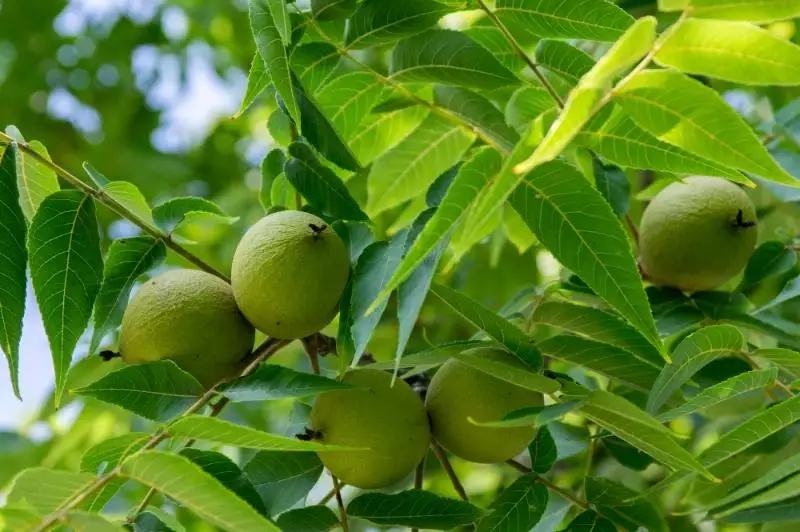
Due to the rarity of the Buartnut and the specialized interest in hybrid trees, they may not be readily available in all nurseries, but they can sometimes be found through specialty growers or nut tree associations. If you're interested in cultivating Buartnuts, you may need to seek out these specialized sources for saplings or seeds.
Growing and caring for walnut trees
When you decide to grow walnut trees in Ontario, selecting the right site is crucial. Your walnut trees will need a location that provides full sun exposure and well-drained soil. The soil should be loamy and have a neutral to slightly acidic pH.
Planting your tree
- Choose a spot with enough room as walnut trees can grow to a considerable height and develop an extensive canopy.
- Ensure the area has ample space for the roots to spread without disturbance.
- Plant walnut trees in the spring or fall for the best establishment.
Soil and watering
- Walnut trees prefer soil that is deep and fertile.
- Watering is essential during the dry periods, especially during the initial growth years.
Growth and care
- Expect your tree to grow slowly but provide many benefits, including shade and attracting wildlife like birds and squirrels.
- Regular pruning will help maintain the canopy and overall health of the tree.
Nuts and harvest
- Patience is key, as walnut trees can take several years before they begin to produce nuts.
- Once mature, you will enjoy the rewards of fresh walnuts seasonally.
